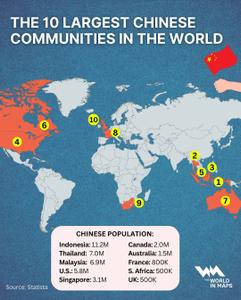migration

Environment / 1 week ago
The largest immigrant communities across the Middle East
According to the UNHCR, the Middle East and North Africa region remains one of the largest hosts of refugees and migrants in the world. Millions are displaced by conflict and economic hardship, and the region accounts for about 14% of the global migrant population. The Pew Research Centre also reports that the Middle East’s migrant population more than doubled between 2005 and 2015, increasing from 7% to 13% of the total regional population. Labour migration, mainly from South Asia, is a key factor in this rise.
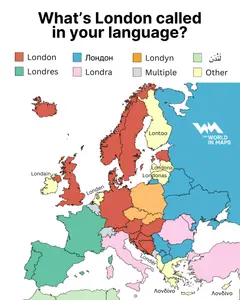
Maps / 1 week ago
A look at Europe’s many linguistic versions of London
A new linguistic map by The World in Maps shows how the name “London” changes across Europe. While English speakers know it simply as London, its name takes different forms depending on the language. In France, Spain, and Portugal, it appears as Londres. In Italy and Romania, it becomes Londra. Across Poland and Czechia, it’s Londyn and Londýn, while in Finland it’s Lontoo. Greek speakers use Λονδίνο, and in Welsh, the city is known as Llundain.
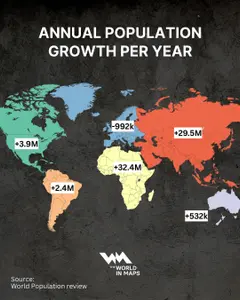
World / 4 weeks ago
Africa leads the world in population growth as Europe shrinks
The world’s population is still growing, but not evenly. According to the World Population Review, Africa is adding about 32.4 million people every year, making it the fastest-growing continent on Earth. Asia follows closely, increasing by around 29.5 million people per year. In contrast, Europe’s population is shrinking, losing nearly one million people annually.
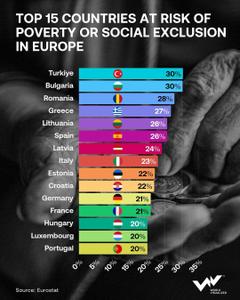
Business / 5 weeks ago
Parts of the EU risk poverty and social exclusion
Europe is widely seen as a basin of prosperity, with advanced economies, generous welfare systems, and high standards of living. Yet, in many European nations, nearly a third of the population faces poverty. The most recent data from Eurostat (2024) reveals stark disparities. Türkiye and Bulgaria top the list, with 30% of their populations facing poverty or social exclusion, followed closely by Romania (28%), Greece (27%), and Lithuania (26%).

Maps / 6 weeks ago
Over 40 million residents in Europe were born outside the EU
According to data available on January 1, 2024, 44.7 million people living in the EU were born outside the Union (about 9.9% of the population). A further 17.9 million were born in another EU country. Together, these groups explain much of the bloc’s population growth and a growing share of its workforce. By absolute size, Germany hosts the EU’s largest foreign-born population (15.8 million), followed by France (10.1 million), the UK (9.6 million) and Italy (6 million).

World / 6 weeks ago
Why some nations have more men and others more women
A world map produced by The World in Maps tellingly shades nations by whether they have more men or more women — red where women are in the majority, blue where men outnumber women. Globally, as of 2025, there are about 101.07 males for every 100 females in the world population. That slight male majority is driven largely by higher birth ratios favouring boys, though over time that tilt tends to fade as women live longer on average.
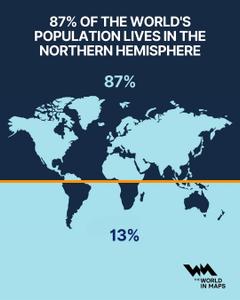
World / 7 weeks ago
Why nearly 9 in 10 people live in the northern hemisphere
Look at any global map of population distribution and one striking fact becomes immediately clear: nearly 87% of the world’s people live north of the Equator, while only about 13% live in the Southern Hemisphere. This lopsided distribution arises largely because the Northern Hemisphere contains more landmass, including Asia, Europe, most of North America, and a large portion of Africa, which in turn supports dense urbanisation, infrastructure, and economic activity.

Culture / 7 weeks ago
New index ranks Colombia, Venezuela, and Uruguay as most similar nations to Brazil
Brazil is often celebrated as a country like no other, as the land of samba, football, lush rainforests, and a unique Portuguese-speaking identity in a Spanish-speaking continent. Yet, new data shows Brazil might not be as culturally isolated as many believe. According to the Country Similarity Index, which evaluates nations across demographics, culture, politics, infrastructure, and geography, several Latin American countries share strikingly similar profiles.
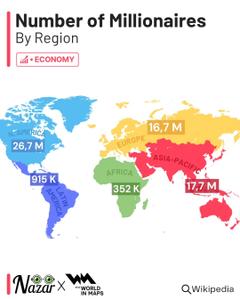
Business / 11 weeks ago


